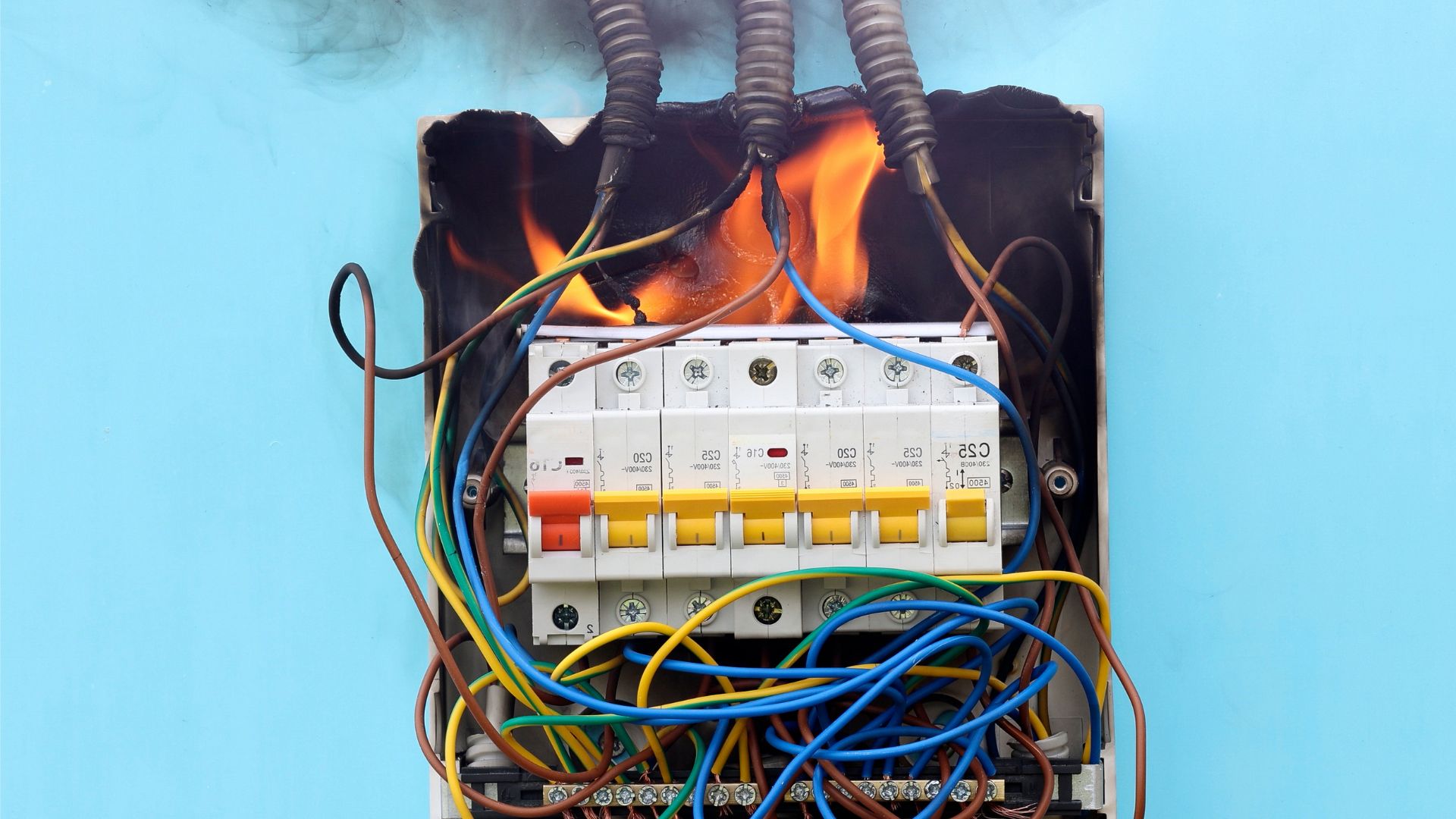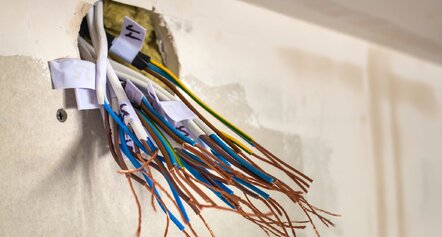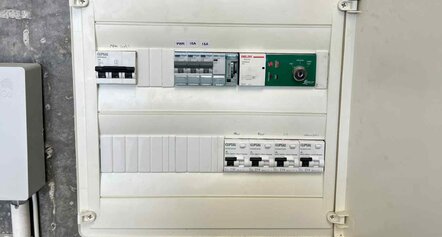Electrical fires are one of those hidden dangers most people don't think about-until it's too late. While it's easy to assume that flickering lights or a tripped breaker are nothing to worry about, these can actually be early warning signs of more serious issues. The truth is, electrical fires often start quietly, smouldering behind walls or inside appliances, sparked by entirely preventable problems.
The risks are more common than you'd think, from ageing wiring in older homes to overloaded power strips in modern households packed with gadgets. And in many cases, it's not about faulty products-it's about how we use them, how our electrical systems were set up, or how long we've left potential hazards unchecked.
The good news? Most electrical fires don't happen out of nowhere. There are patterns, causes, and clear red flags that, once recognised, can help you take control before disaster strikes. In this blog, we'll break down what causes electrical fires, how to spot the early warning signs, and the practical steps you can take to keep your home, family, or workplace safe. Whether you live in a newly built home or an older property on the Sunshine Coast, knowing what to look for can make all the difference.
Let's look into the common causes of electrical emergencies-and more importantly, how to prevent them.
What Is an Electrical Fire?
An electrical fire is a type of fire sparked by malfunctioning or overloaded electrical systems, components, or devices. Unlike fires caused by open flames or kitchen mishaps, electrical fires often begin invisibly-behind walls, inside appliances, or within faulty outlets-making them harder to detect and more dangerous if left unchecked.
At its core, an electrical fire ignites when heat builds up from electrical current in places it shouldn't. This can happen due to faulty wiring, damaged extension cords, overloaded circuits, or even something as simple as a light bulb that exceeds the maximum recommended bulb wattage. Add in the presence of combustible materials like curtains, paper, or wood, and you've got a major fire hazard waiting to happen.
What makes electrical fires particularly tricky is that they don't need an open flame to start. A single frayed wire, a malfunctioning appliance, or an ageing electrical circuit can produce enough heat to catch fire, especially when surrounded by flammable materials. The scary part? In many cases, they start silently and can smoulder for hours before bursting into flames.
And unlike other fires, using water on an electrical fire is a serious mistake. Water conducts electricity, which can lead to an electric shock or even spread the fire further. That's why you need a Class E fire extinguisher or a fire blanket to deal with these types of emergencies safely.
Whether in homes or industrial settings, understanding what an electrical fire is-and how it behaves-is the first step toward protecting your space. In the next section, we'll cover the common causes of electrical fires and how to avoid them.
Common Causes of Electrical Fires

1. Faulty Wiring and Outdated Systems
One of the leading causes of electrical fires is faulty wiring. Over time, wiring can deteriorate, leading to frayed cords and damaged insulation, which increases the risk of fire. Homes with outdated wiring systems may not handle modern electrical loads, making them susceptible to overheating and potential fire hazards.
2. Overloaded Circuits and Power Strips
Plugging too many devices into a single outlet or power strip can overload circuits, causing them to overheat. This is especially risky with high-wattage appliances like space heaters. To prevent electrical fires, it's essential to avoid overloading circuits and use power strips appropriately.
3. Improper Use of Extension Cords
Extension cords are meant for temporary use, but many people use them as permanent solutions, leading to damaged extension cords and increased fire risk. Running extension cords under rugs or furniture can cause them to overheat and catch fire.
4. Malfunctioning Appliances and Equipment
Electrical appliances and equipment that are old or malfunctioning can be significant fire hazards. Appliances with damaged wiring or faulty outlets can overheat and ignite nearby combustible materials. Regular maintenance and timely replacement of malfunctioning appliances are crucial.
5. Light Fixtures and Bulbs
Using light bulbs with wattage higher than recommended for a fixture can cause overheating. Additionally, placing light fixtures near flammable materials increases the risk of fire. Always adhere to the maximum recommended bulb wattage to ensure safety.
Warning Signs of Potential Electrical Fires
Being vigilant about certain warning signs can help in early detection and prevention of electrical fires:
- Flickering lights
- Persistent burning smell
- Frequent tripping of circuit breakers
- Discoloured or warm outlets
- Frayed wiring
If you notice any of these signs, it's advisable to consult a qualified electrician immediately.
Safety Tips to Prevent Electrical Fires
1. Regular Inspections
Have a licensed electrician inspect your home's electrical systems periodically. They can identify and rectify issues like outdated wiring, faulty outlets, and overloaded circuits.
2. Proper Use of Electrical Devices
Avoid plugging too many devices into a single outlet. Use power strips with surge protectors and ensure they are not overloaded. Unplug appliances when not in use to reduce the risk of overheating.
3. Safe Use of Extension Cords
Use extension cords only temporarily and ensure they are in good condition. Avoid running them under rugs or furniture. If you rely heavily on extension cords, consider installing additional outlets by a qualified electrician.
4. Appliance Maintenance
Regularly check electrical appliances for signs of wear and tear. Replace any malfunctioning appliances promptly. Ensure that appliances are used according to the manufacturer's instructions.
5. Install Smoke Alarms
Install smoke alarms in key areas of your home, such as the kitchen, bedrooms, and hallways. Test them monthly and replace batteries as needed to ensure they function correctly.
Emergency Measures

In case of an electrical fire:
- Do not use water to extinguish the fire, as water conducts electricity.
- Use a fire extinguisher rated for electrical fires, such as a Class E fire extinguisher.
- If the fire is small, a fire blanket can be used to smother the flames.
- Evacuate the premises and call emergency services immediately.
Stay One Step Ahead of Electrical Fires
Electrical fires pose a significant risk but are largely preventable with proper precautions and regular maintenance. By understanding the common causes and implementing safety measures, homeowners can protect their property and loved ones from potential fire hazards.
For residents on the Sunshine Coast, Watt Edge Electrical offers professional services to ensure your home's electrical systems are safe and up to date. Our team of licensed electricians can assist with inspections, repairs, and upgrades to help prevent electrical fires.
Frequently Asked Questions About Electrical Fires
1. What are the four causes of electrical fire?
There are several potential triggers, but four of the most common causes of electrical fires include:
- Outdated electrical systems - Older homes often have wiring that can't keep up with the demands of modern electrical appliances and devices, creating a serious fire risk.
- Overloaded circuit breakers - When too many appliances draw power from the same electrical circuit, the breaker can overheat or fail, allowing heat to build up in the electrical wires.
- Faulty electrical equipment - Frayed cords, worn-out plugs, and poorly maintained electrical equipment can easily spark if left unchecked.
- Improper electrical work - DIY fixes or unlicensed modifications to your home's power supply can lead to hidden problems that increase the chance of a fire.
Keeping up with regular inspections and prioritising electrical safety is key to avoiding these issues.
2. What is the most common source of electrical fires?
The single most common source? Overloaded or faulty electrical appliances. These include items like space heaters, dryers, or even kitchen gadgets that draw a lot of current over long periods. When these appliances overheat-or when the wiring inside them becomes damaged-they can ignite surrounding materials.
Another common culprit is neglected circuit breakers that fail to trip during overloads, allowing excessive heat to build up in your electrical wires. That's why it's so important to have a licensed electrician check your systems regularly, especially in homes with outdated electrical systems.
3. What is the most likely cause of electrical fires?
The most likely cause is a combination of faulty wiring and excessive electrical load. When the wiring in a home or building can't handle the demand placed on it by modern electrical appliances, circuit breakers may not respond fast enough, giving heat time to accumulate and spark a fire.
Neglecting proper electrical safety practices-like continuing to use damaged cords, ignoring flickering lights, or overloading power strips-only increases the risk. It's also common for fires to start from older electrical equipment that hasn't been properly maintained.
4. Can an electrical fire start if nothing is plugged in?
Surprisingly, yes. An electrical fire can still start even when nothing's actively plugged into an outlet. This usually points to deeper problems in the electrical work, like damaged insulation inside the walls, deteriorated electrical wires, or overheating from a failing circuit breaker.
Faults in the power supply or hidden issues in outdated switchboards can also smoulder silently before igniting. These fires often start inside walls or ceilings-places you can't see-making them particularly dangerous. This is why routine inspections and proactive electrical safety checks are essential, especially in properties with outdated electrical systems.




